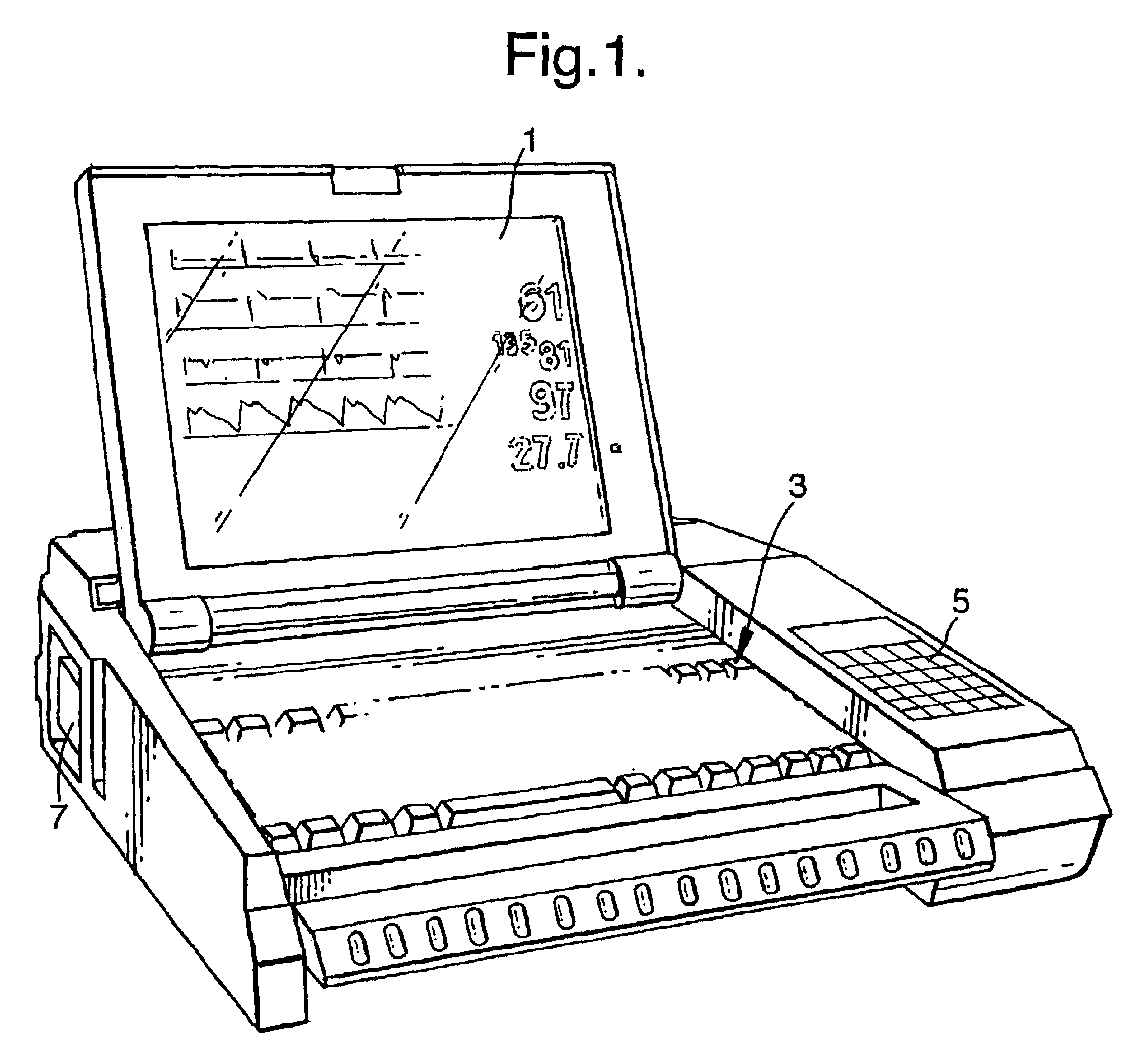System and method for acquiring data
a data acquisition and data technology, applied in the field of data acquisition, can solve the problems of reducing the clarity of display, affecting the efficiency of data acquisition, and difficulty in displaying the different parameters in a concise and synchronised way, so as to improve the clarity of display and facilitate portability without risk of damage
- Summary
- Abstract
- Description
- Claims
- Application Information
AI Technical Summary
Benefits of technology
Problems solved by technology
Method used
Image
Examples
Embodiment Construction
An embodiment of the invention will be described applied to the monitoring of physiological parameters, though the invention can be applied to any system being monitored by devices running on independent clocks. Typical examples include vehicles, manufacturing or processing plants, control or monitoring systems for instance for the environment.
Referring to FIG. 1 the illustrated embodiment of the invention is based on a ruggedized laptop computer which includes a display (1) a keyboard (3) and touchpad (5) as data input devices and connectors (7) to which can be connected the various types of data collection device from which physiological data is to be acquired.
This embodiment of the invention is suitable for receiving signals from such devices as an electrocardiograph, blood pressure monitor, respiration monitor, oxygen saturation monitor and thermometer and, as will be appreciated from the discussion above, typically all of these signals are acquired by those devices at different...
PUM
 Login to View More
Login to View More Abstract
Description
Claims
Application Information
 Login to View More
Login to View More - R&D
- Intellectual Property
- Life Sciences
- Materials
- Tech Scout
- Unparalleled Data Quality
- Higher Quality Content
- 60% Fewer Hallucinations
Browse by: Latest US Patents, China's latest patents, Technical Efficacy Thesaurus, Application Domain, Technology Topic, Popular Technical Reports.
© 2025 PatSnap. All rights reserved.Legal|Privacy policy|Modern Slavery Act Transparency Statement|Sitemap|About US| Contact US: help@patsnap.com



